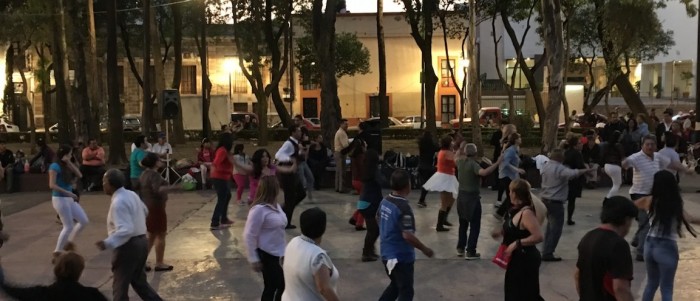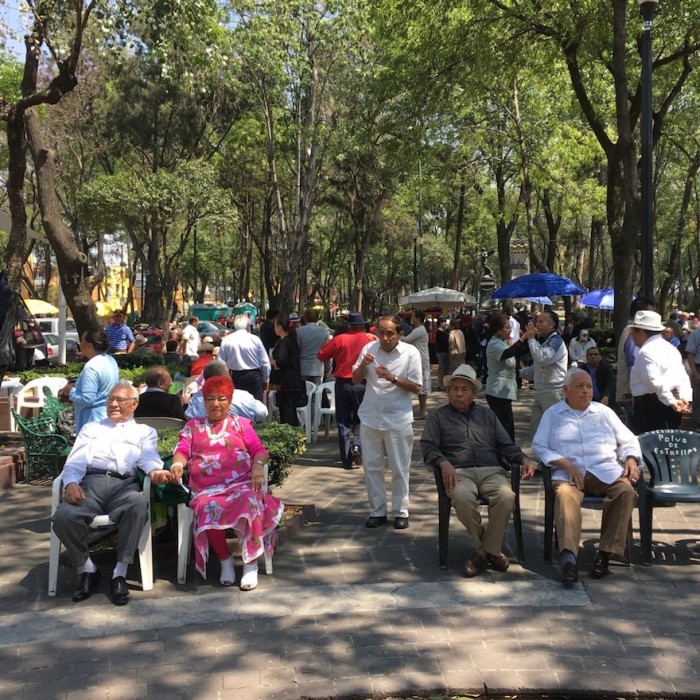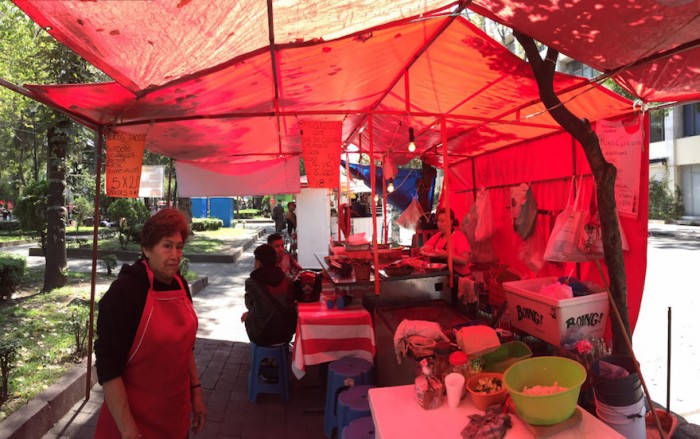This article is republished from Common Edge
How do you judge a public space? Is the prototypical, windswept plaza—a winner perhaps of countless design awards—a failure if it’s always empty? Or the row of food trucks parked on a sidestreet a success because it’s always teeming with life (and the wafting plumes of barbecue)? I’d argue that people always vote with their feet: spaces intended to be gathering places should be just that. Unlike evaluations of art and architecture, there’s nothing subjective about public space. Either a crowd shows or it doesn’t.
And contrary to the best laid plans of mice and men (and landscape architects and urban designers), the public uses space in unpredictable and ingenious ways. The best urban places are often self-designed, semi-blank slates with a lot of room around the edges for civic improvisation. No where is this phenomenon more apparent than Mexico City, a teeming metropolis famous for active public spaces and DIY-urbanism. Plaza Ciudadela, a public square located next to the Biblioteca de Mexico, is a bustling case-in- point.
“It’s actually two squares, bisected by a road,” says Dennis Pieprz, a design principal at Sasaki Associates. “They are quite ordinary places.” It’s true. Plaza Ciudadela won’t win any design awards, but it accomplishes something far more important: it draws a crowd of all ages, from children and their parents and grandparents, earlier in the day, to trolling singles, as the sun sets and the volume of the music swells. Pieprz explains the square’s unique appeal. —Martin C. Pedersen
“I love this space because it can accommodate a variety of uses in the most straightforward ways,” says Pieprz.
“There are fixed components, like raised planters with seats, a variety of paving materials and colors, and installations in the form of brightly colored canvas roofs, strung from trees, slicing through the space. They set up temporary restaurants, cafes and stalls. Once I even saw a fully operational hairdressing salon, all in about 4-by-8-feet.”
“Dressed in their finest, these four sit on their chairs as if they are attending a great civic event. And I suppose in a sense they are. Moments before the man and woman had been dancing an elegant waltz to a powerful boom box resting on a nearby table.”
“Saturday dancing is a tradition in this square. On the day of the event, a series of special spaces, almost separate stages, emerge as settings for dancing. Here, between the floor and the floating, fluttering roof, the couple appears to be nestled in their own temple.”
“The stalls have bright canvas roofs strung over them, in a series of different colors, and the effect of the dappled light filtering through the trees and onto them is remarkably warm and inviting. Each color seems to create a slightly different feeling underneath it.”
Content produced by:
More on public spaces:
What landscape architects and urban designers can learn about public places from Cuba











